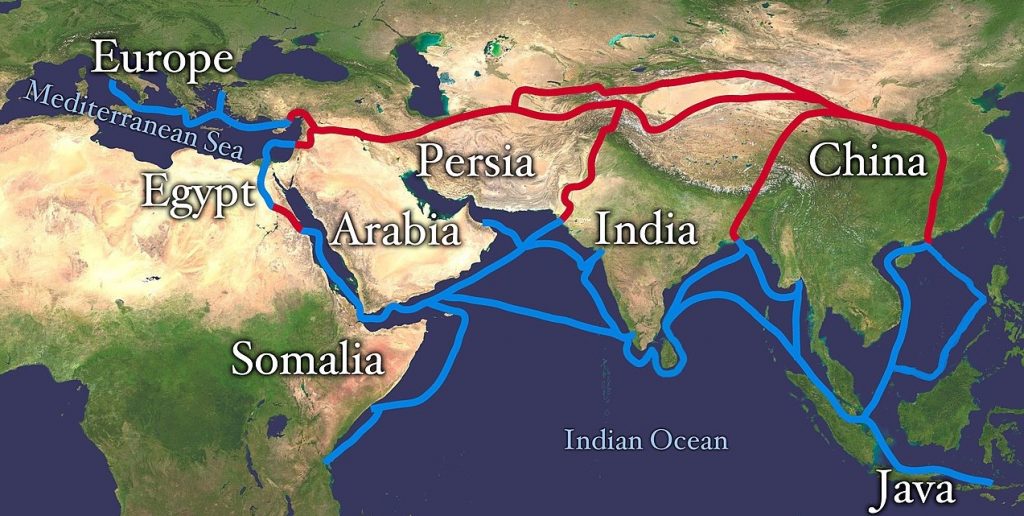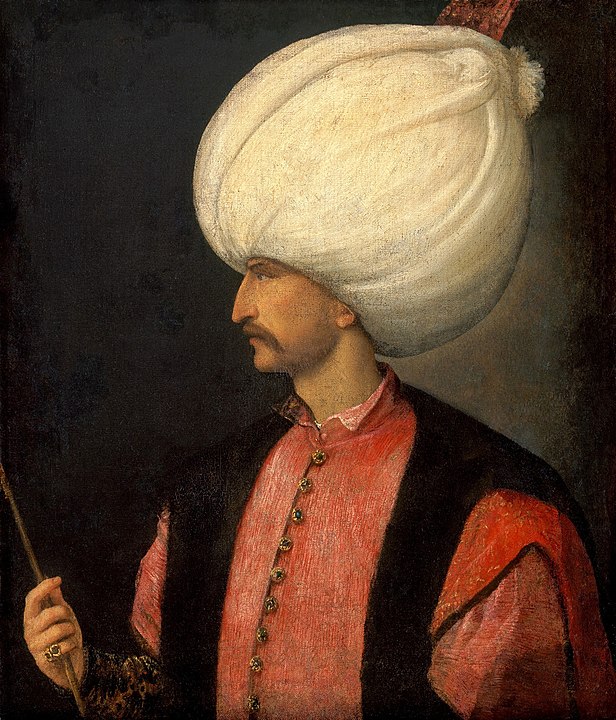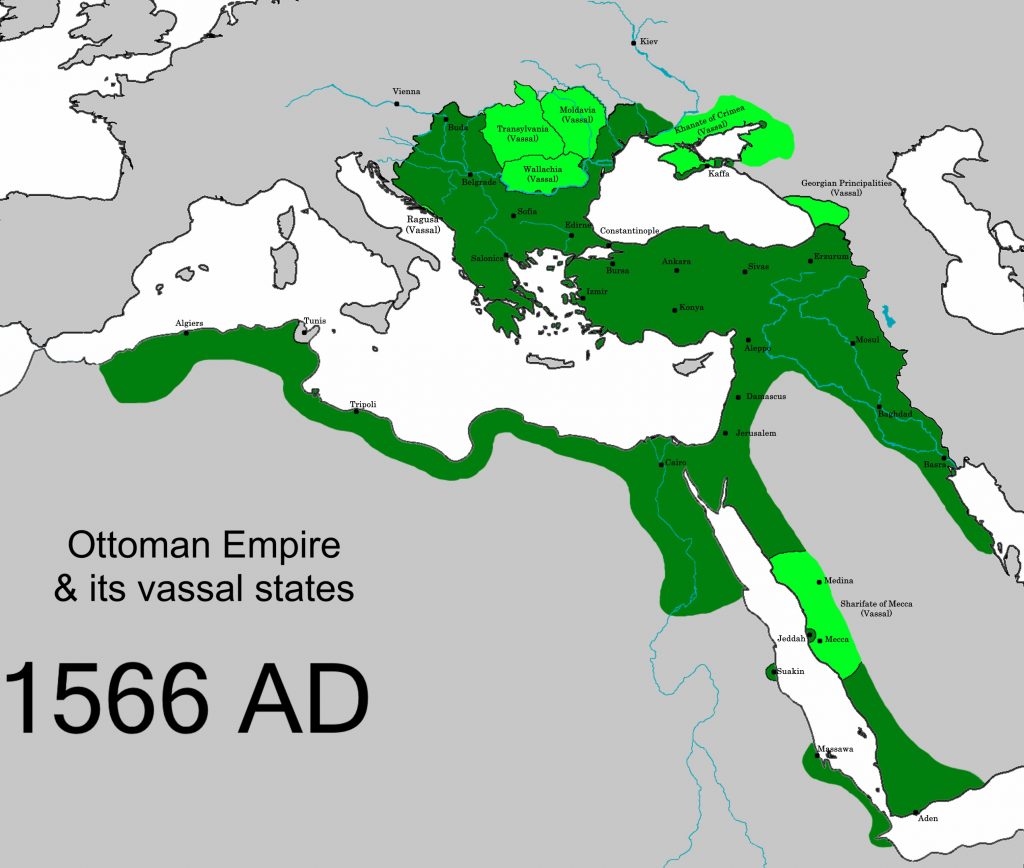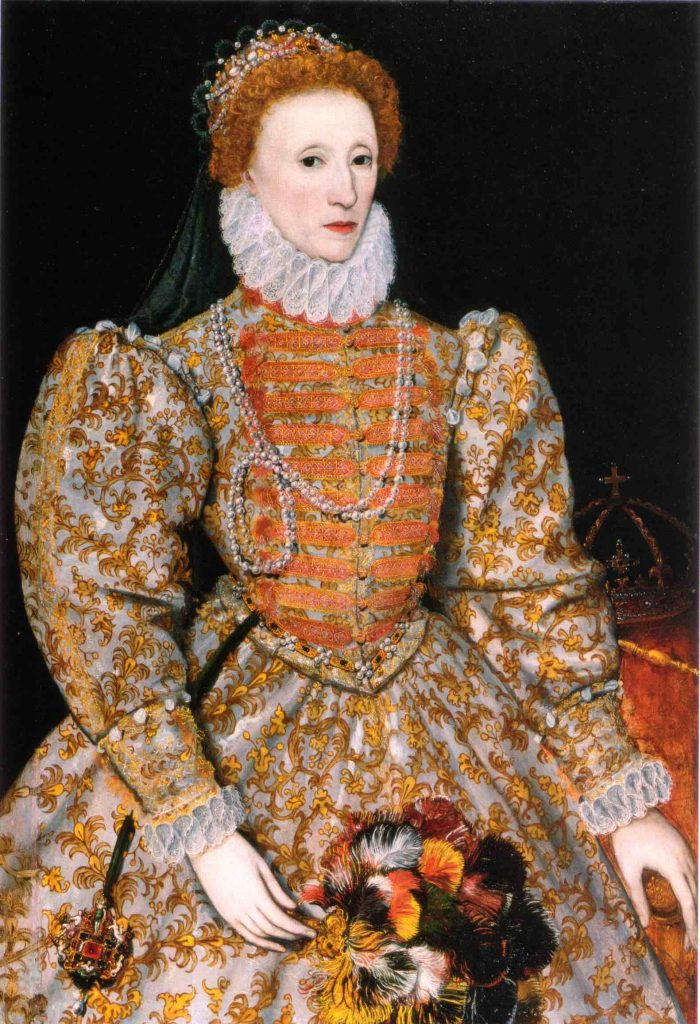(I recently pulled together some of the thoughts and analyses this project has provoked, and published them on the blog of the non-profit I head, Just World Educational. This is a cross-post from there. ~HC)
On January 1, I launched a new writing project, which is a sustained exploration of the last 500 years of human history. Its prime focus is on how exactly it was that “the West” came during these centuries to dominate– and retain domination of– the whole global system.
I confess that I started this project as a kind of writing exercise, trying to get back into good shape “writing muscles” that became a little limp during the past eleven years, when I devoted a lot more time to administrative and publicity work– supporting the writing and public voices of others– than I did to honing my own public voice. The method I adopted was to make sure to write something on my personal blog each day that would summarize the key events of one year in human history, starting 500 years ago, in 1520 CE and galloping through the decades to arrive at the present in around mid-May of next year.
You can read my daily essays in whole here, or here.
But as with all serious writing, there has been a lot of serious learning involved in the crafting of these texts, as well. And now that I have “arrived” at 1595 CE, I have reached some preliminary conclusions about how it was that some Western European nations emerged as “pioneers” in the building of globe-girdling empires, back in the 16th and even the 15th centuries of the Common Era.
Well, I write “nations” there. But actually, one of the things I’ve discovered is that at the time in which the entities we now know of as Portugal and Spain started building their global empires, they weren’t even really “nations” in any form we would immediately recognize today. Indeed, the consolidation of recognizable “nation-states” seems to have been contemporaneous with, or even a result of, the building of the global empires that sustained them; and then, it was those nation-states that built the “nations” of citizens or subjects that comprised them, rather than the other way around. (It is very significant, from a Benedict Anderson/ “print capitalism” point of view, to note that the emergence of the first two West Europe-based global trading empires in the 16th century was contemporaneous both with the importation of movable type technology– which came from China– and with an ecclesiastical Reformation that greatly spurred the demand for religious texts in various demotic languages… )
One of the key things I have come to understand from my work on this project until now is how deeply a sense of Islamophobia, or anyway of deep competition with Islam, was baked into the emergence of “the West” from the very beginning. And this happened, I think, in at least three different ways.
First, look at those two “pioneers” in creation of Europe-based global trading empires: Portugal, and “Spain” (which back then was still the only partially conjoined monarchies of Castile and Aragon.) Why were these two (or three) entities the pioneers in mastering the kind of globe-capable navigational, shipbuilding, weapons-building, warfighting skills that were needed to sail to distant shores with enough heavy weapons aboard their ships that they could shoot their way into ports, force trading terms upon the locals, stock or restock their ships, and then have a decent chance of sailing safely back to their homes? No small accomplishment– and no meager skill-set!
The answer to the question of why those powers had a lot to do with the skill-sets that the basically feudal leaders in Portugal, Castile, and Aragon had developed during the lengthy preceding centuries in which they had fought to oust the very well-developed Muslim city-states that preceded them in the Iberian Peninsula, and send those Muslim leaders packing, “back” into North Africa. The Christian powers that advanced into Iberia called that centuries-long series of campaigns the “Reconconquista”. It ended only when Ferdinand and Isabella, the combined monarchs of both west-facing Castile (Isabella) and east-facing Aragon (Ferdinand), were finally able to oust the last Muslim leader from Granada in 1492.
It was not really much of a surprise that the final victory of the Christian Reconquista in Iberia would coincide almost exactly with Isabella’s dispatch of the (originally Genoese) navigator Christopher Columbus on a west-bound mission across the Atlantic to “discover” a western route that he hoped would take him to the long-fabled Spice Islands of East Asia: “the Indies”. Columbus’s journey would, as we know, initiate the new Conquista by Castile/Spain of massively large chunks of terrain in the Caribbean and in the southern, central, and nothern part of the landmass that we know as the Americas.
The shadow of the Reconquista of Iberia hung heavy over the Spanish Conquista of the Americas, from the very beginning. For example, one key mechanism the Spanish– and also to some extent, the Portuguese– used in their administration of the “new lands” they conquered in the Americas was something called the encomienda. This was a mechanism, first introduced during the long slog of the Reconquista that enabled the Christian rulers of lands recently seized from the Muslims to both control and exploit the residents of those lands. An encomienda was basically a license that the leading monarch would grant to a sub-lord, that entitled him to rule over and exploit the labor of all the residents of a given area. The favored encomenderos would then give an agreed portion of his profits back to the monarch. But for the “Catholic Monarchs”, as Ferdinand and Isabella proudly titled themselves, a big part of the “control” aspect of the encomienda system was always mind-control. Basically, the encomendero had to agree to forcibly convert all the peons under his control, who until then might have been Muslims or in some cases Jews, to the “true”, that is the Catholic Christian faith, and to police those conversions. (By the way, Ferdinand and Isabella agreed to help the encomenderos with the policing of these conversions by creating the Spanish Inquisition; and though Castile and Aragon each retained their sovereignty over their respective regions and enjoyed considerable powers therein, the Spanish Inquisition soon also emerged as the main instrument of “joint” Spanish administrative control.)
So when Ferdinand and Isabella– actually, mainly Isabella– suddenly found themselves in control of so many “new”, and sometimes heavily populated, territories in the Americas, it must have seemed quite natural from them to extend the same system of exploitation/control to the newly conquered peoples there, as well; and that was what they did. In this case, it was not “Moors” whom they were forcibly converting, but undifferentiated “heathens”. And they got a lot of help from Catholic religious orders like the Dominicans and the Franciscans as they did so. The “exploitation” part of the encomienda system was left mainly to the encomenderos, who in many cases were the original Spanish conquistadores of the territories, though numerous additional Spanish settlers came in afterwards to join in exploiting the natives. But anyway, the idea that they were “doing God’s work” by forcibly converting the natives was a powerful co-motivator for the conquistadores‘ efforts– along with the prospect of the sheer profit they could make from their exploitation of the virtually enslaved indigenes; and the means they used both to extract the profit and to effect the conversions were often extremely gruesome and cruel.
The path that Portugal’s early empire-builders pursued in building their steadily expanding global trading empire had been a little different. The King of Portugal had completed the ousting of the Muslim lords from the terrain he claimed as Portugal 250 years before 1492, in 1249. And as early as 1415, Portugal’s King John I set sail in person, along with his sons, to lead a fleet that conquered the rich Muslim city of Ceuta, near Tangier, in North-west Africa. (One of those sons was Prince Henry, known as the Navigator.) Now, Ceuta was not very far from Portugal; but once having gotten there, Henry and other Portuguese navigators slowly pushed further west and south, and then made their way counter-clockwise around the African continent. In 1419 a Portuguese expedition “discovered” and started settling the island of Madeira. Eight years later, they did the same in the mid-Atlantic archipelago of the Azores. In both, they started producing wheat for export back to Portugal. As they pushed south down the coast of West Africa, the Portuguese established several small-ish trading posts:a key “commodity” they traded in was enslaved Africans, some of whom they hauled back to Portugal; others, they set to work in the offshore plantations they established in the Azores, Madeira, Sao Tome, and elsewhere. In 1434, they pushed around the extreme western portion of the continent and in 1488, they rounded the Cape of Good Hope, at Africa’s southern tip.
All this happened, of course, before Columbus set out across the Atlantic.
Then, soon after the Portuguese ships were able to round the Cape of Good Hope and enter the Indian Ocean, they found themselves able to connect with the many many long-existing trade routes that existed there, that criss-crossed the whole maritime area east of Africa and south of the Eurasian landmass, uniting into a single extended trading system the ports on all those bodies of water from Mozambique to the Red Sea, around India, down into today’s Indonesia, and then to China, Korea, and Japan.
Many of those trading ports belonged to civilizations considerably older, larger, and more technologically advanced than Portugal’s. But the Portuguese navigators were scrappy merchants, nearly always prepared to make nice with the local rulers they met provided they could strike some good deals for the often dazzling array of goods available in these rulers’ markets. The nature of their encounters with these local rulers and civilizations around the Indian Ocean was notably different from the crudely regicidal and genocidal policies the Spanish pursued in the Americas. In places where they could establish a good foothold of their own the Portuguese did try, like the Spanish in the Americas, to establish colonial settlements; but their colonies (except later, in Brazil) were generally much smaller and less ambitious than the Spanish ones.
For the Portuguese, as for the Spanish, the main motivating factor was profit, with the goal of winning “conversions” of the indigenes to Christianity playing a supporting role. But whereas the empire the Spanish were building in the Americas was nearly wholly extractive– extracting silver and gold from the local rulers and from the lands they conquered and mined, and agricultural surpluses from the plantations they built– the empire the Portuguese built up around the Indian Ocean was primarily a trading empire: one designed to bring back to European markets some of the extremely valuable goods being produced by the local civilizations. Of these commodities pepper was the stand-out, in terms of profitability, along with the four other “Golden Spices”. But textiles, ceramics, and numerous other manufactures produced in Asia proved worth the large costs of transporting them back around the Cape of Good Hope to the markets in Europe.
Europe had, of course, been importing these high-value, high-profit luxury goods from the manufacturers of Asia for many centuries already. They had been doing so via the intertwined networks of land and maritime routes that made up the fabled “Silk Road”. And by early in the second millennium, nearly all those routes were dominated by Muslims, which was something the militant Christians of the Reconquista were not happy about, at all. When Columbus sailed west on behalf of Queen Isabella, he was looking for (and thought he had found) a new sea route to the Spice Islands of the Indies: one of his– and Isabella’s– main motivation for doing so was to circumvent the Muslim stranglehold on the Silk Road and undercut the various Muslim empires that profited from it. And when the Portuguese navigators sailed east around Africa and into the Indian Ocean, they were seeking to do the same. But unlike Columbus, they succeeded.
In looking at the anti-Muslim– or at the very least, the decidedly counter-Muslim– roots of the empires that the Spanish and Portuguese proto-states were building in the 15th and 16th centuries, it is also worth remembering that, though the last Muslim rulers had been expelled from Iberia in 1492, down at the other end of the Mediterranean a relatively new and very vigorous Muslim power was still expanding, including deep into Eastern and central Europe. This was the Ottoman Empire, that came onto the scene in western Anatolia in 1299; moved its capital to Edirne (Adrianople), in Europe, in 1369; conquered Constantinople in 1453; and throughout the 16th century looked set to become a significant power in the Mediterranean, in southern and eastern Europe, in North Africa, and down through Egypt into the Red Sea.
Throughout the 16th century, the challenge posed by the Ottomans was felt most keenly by the Spanish. Because of a lot of dynastic marrying that had been going on in Christian Europe, King Charles I of Spain, who ruled there 1516-56 was also, for most of his reign there, King Charles V of the Holy Roman Empire. That was a sort of legacy title, since he didn’t actually rule either Rome itself, or the “New Rome” that had been established in Constantinople– but it came with feudal/monarchical control, in the name of the Habsburg dynasty, over lots of lands scattered all over Europe, from Southern France to Netherlands to Hungary. So in a sense Charles and his successors had to be very concerned about the the advances the Ottomans were making in Europe in the 16th century. The Ottomans’ steady progress westward across the Mediterranean was ended at a famed battle in Lepanto, off the west coast of today’s Greece, in 1571; but they continued to be a big factor in the geopolitics of central Europe for at least the next 300 years.
As for the Portuguese, their navigators had rounded the Horn of Africa by around 1500; and by 1513 they had established naval/trading bases in the Red Sea (Kamaran Island), the Arabian Sea (Socotra), and the Persian Gulf (Bahrain, Hormuz, Muscat.) In 1517, the Ottomans conquered Egypt, and suddenly had their own naval presence at the northern end of the Red Sea, from where they were able to win Muslim allies all down the Red Sea and challenge the alliance the Portuguese had established via the Red Sea, with the long-Christian monarchs of Ethiopia.
So how much does it still matter today, at the slow-fading end of the era of “Western” domination of the world, that the origins of this West-dominated system were so closely entwined with its anti-Muslim impetus? It is true, of course, that the Portuguese and Spanish did not for very much longer after the end of the 16th century maintain their primacy among the ranks of the empire-building European nations. In the 17th century, Netherlands, England, and France would enter the stakes, with all five “great” European colonial powers then jockeying amongst themselves for comparative advantage. (And much, much later, they were joined by the untethered colonial settler state that had declared its own UDI against its metropole: the United States of America.)
But when Netherlands, England, and France entered the empire-building stakes, they all built a lot on the same kinds of operating procedures the Spanish (above all), and also the Portuguese had established. It wasn’t so much the anti-Muslim aspect of what the Spanish and Portuguese had done that got copied by the next generation of colonizers; it was the sheer civilizational arrogance, the cruelty, the greed, the fetishization of private profit, the racism, the barbarism– and all of it wrapped up, as needed, in a distinctively smug kind of “My Christian God told me to do this” self-satisfaction.
Two scenes from my recent researches stick with me. One is from 1557 CE, a year in which the world’s first pandemic struck all the world’s major landmasses, carried in large part by the active fleets of armed Spanish and Portuguese trading vessels. This was an influenza pandemic– though there were numerous other illnesses that the Spanish and Portuguese brought with them to the never previously exposed, and therefore very vulnerable, populations of the Americas.
It’s worth noting here that, while the Portuguese colonizers around the Indian Ocean conducted themselves very differently from the Spanish in the Americas, once the Portuguese got serious about colonizing Brazil they seemed to act exactly like the Spanish. Alida Metcalf has written that when the pandemic of 1557 hit colonial Brazil, “Portuguese missionaries did not take breaks from religious activities when they became sick. Missionaries like the Society of Jesus in Brazil founder Manuel da Nóbrega continued to preach, host mass, and baptize converts in the New World even when symptomatic with contagious illnesses like influenza… [M]issionary policies of conducting religious activities while sick likely helped spread the flu.”
(The banner image at the top here is a depiction of how one of the 16th century pandemics affected Indigenes in Brazil.)
The other is from 1562, when England’s Queen Elizabeth was first starting to dip her dainty toe into the waters of global empire-building. She had licensed an English explorer called John Hawkins to work as a “privateer”, using his boat to haul cargoes of enslaved Africans from West Africa to Spanish-controlled island of Hispaniola in the Caribbean (today’s Haiti and DR.) The Spanish colonists there had came to rely on Hawkins’s supplies because (a) they had already worked most of Indigenes of the island to death through their use of the encomienda system of enslavement of the locals, and (b) the 1494 Treaty of Tordesillas that they had concluded with Portugal prohibited them from sailing to anywhere in Africa. The Spanish liked to keep a monopoly on all the trade they engaged in; but they allowed Hawkins to trade with them on payment of 7.5% tax. And of course, when he got back to his home-port back in England, Hawkins had to pay a hefty “privateering fee” to Her Majesty, which was an agreed percentage of his profits.
After Hawkins first explained to Queen Elizabeth how his slave-trading project would work, the records show that, “she was initially appalled by the idea, wondering what would become of the Africans and what would become of their souls. When Sir John explained the profits to her, her morals went to one side” … and she provided her support for the project.







